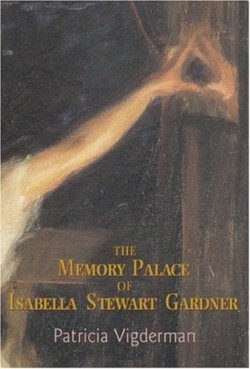The Memory Palace of Isabella Stewart Gardner
The Isabella Stewart Gardner Museum in Boston is deeply rooted in the late nineteenth century: Gardner’s art collection must remain unchanged, or else all objects will be auctioned off in Paris, with proceeds donated to Harvard University. Since the patron destroyed many of her personal papers, much speculation exists about what kind of woman gave this directive. In studying biographies and reading essays by Gardner’s contemporaries, Vigderman strives to bridge the years between past and present to uncover this hidden side of Isabella.
The author splits her time between Cambridge, Massachusetts and Gambier, Ohio, where she teaches English at Kenyon College. Her writing has appeared in many publications, such as The Georgia Review, Harvard Review, The Iowa Review, and The Kenyon Review.
The author first explores but dismisses Gardner’s biographies, finding them biased from their own eras. The first biographer, Morris Carter, was well acquainted with Gardner for the last two decades of her life, but “His admiration for her power does not carry across the years,” the author notes, “and I do not travel easily with him.” The second biographer, Louise Hall Tharp, wrote her account in the 1960s, and the author finds her similarly unsatisfactory.
Next, the author approaches Gardner from another perspective. “To be intimate with the world to which Fenway Court was finally presented,” she observes, “I have had to make voices other than Isabella’s speak to me.” She cites the book Interesting People by Gardner’s friend Corinna Putnam Smith as depicting the lifestyle of wealthy Boston women wanting to showcase some independence. The author uncovers further clues about Gardner from writings of friends such as Clover and Henry Adams, Henry James, and Maud Howe Elliott. From these sources she observes that Isabella relied heavily upon travel and contacts with artistic younger men, such as Bernard Berenson and F. Marion Crawford, for her own erudition.
With her voice running throughout the book, Vigderman journeys alongside the reader, reflecting upon her discoveries about Gardner. She guides the reader through the museum in a meandering fashion, as she uniquely structures the book around the art items housed there. Although at times the pairings of her thoughts with art pieces seem random and unrelated, the matches are often clever, such as the use of Botticelli’s The Tragedy of Lucretia as a heading for a discussion of the suicide of Clover Adams. Interesting black and white images adorn the pages, ranging from artwork exhibited in the museum to portraits of acquaintances. By joining obscure sources with her own observations, the author creates an original method of bridging the gap between past and present that will attract not just fans of the Gardner Museum, but any lovers of art history.
Reviewed by
Beth Hemke Shapiro
Disclosure: This article is not an endorsement, but a review. The publisher of this book provided free copies of the book to have their book reviewed by a professional reviewer. No fee was paid by the publisher for this review. Foreword Reviews only recommends books that we love. Foreword Magazine, Inc. is disclosing this in accordance with the Federal Trade Commission’s 16 CFR, Part 255.

